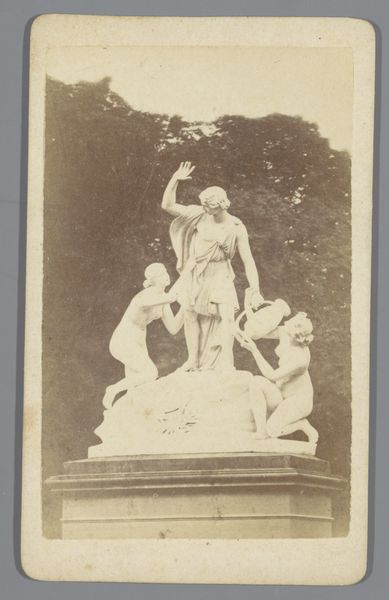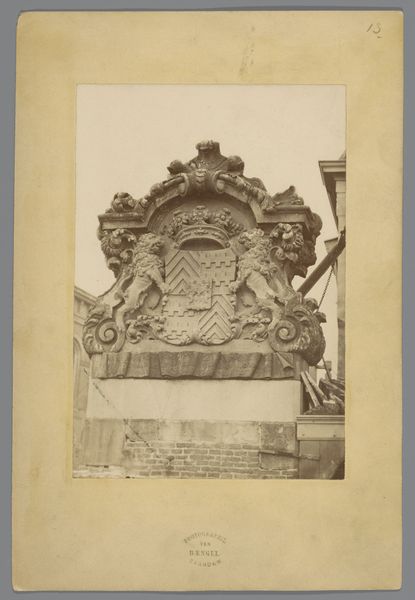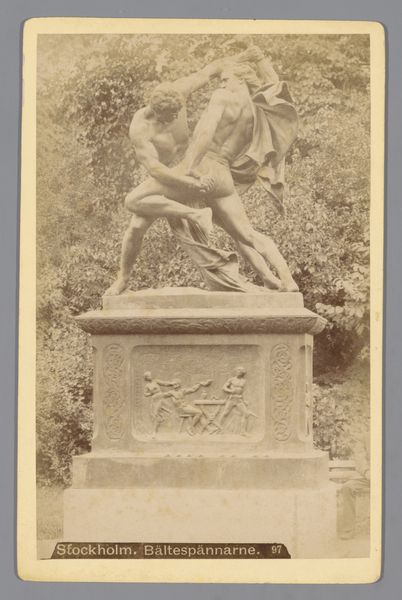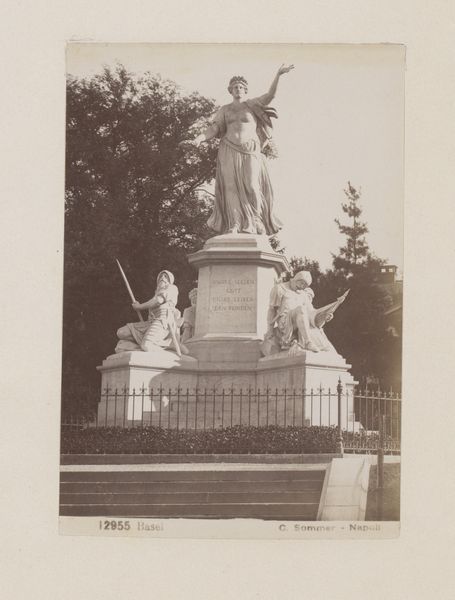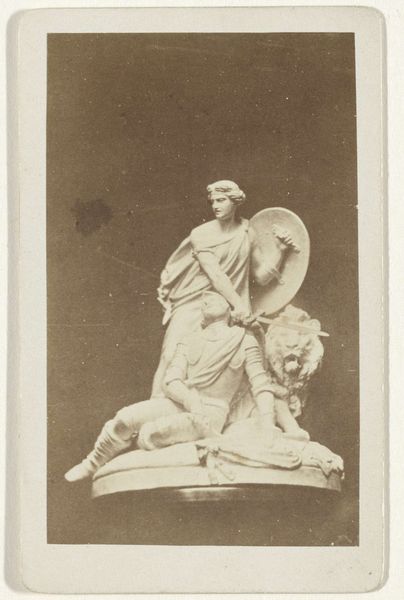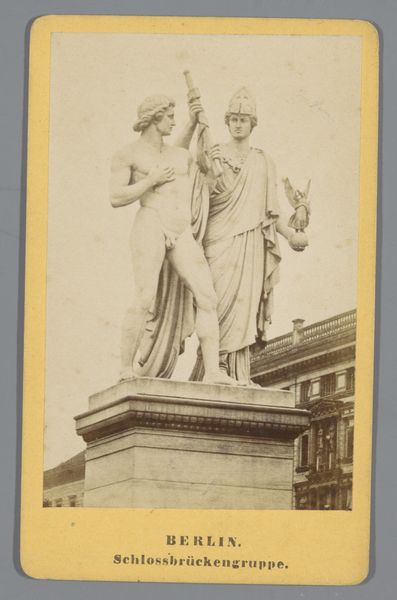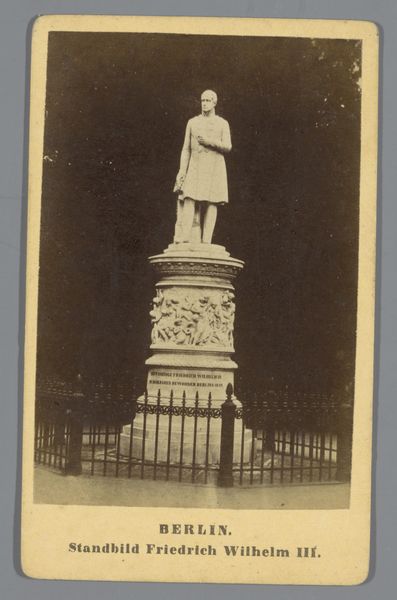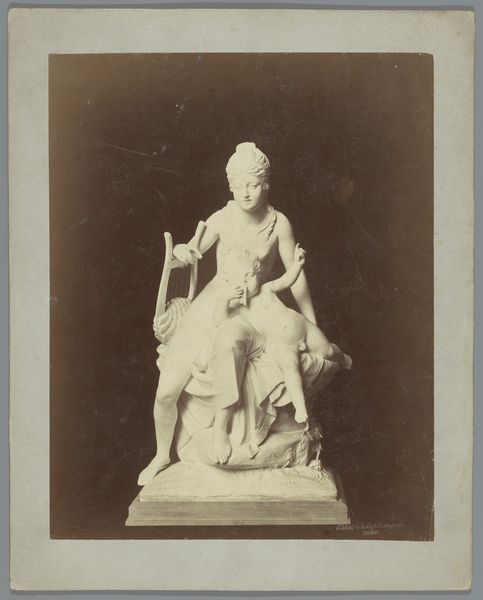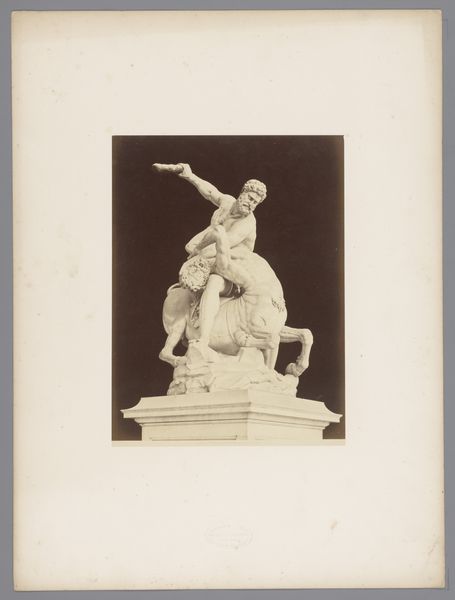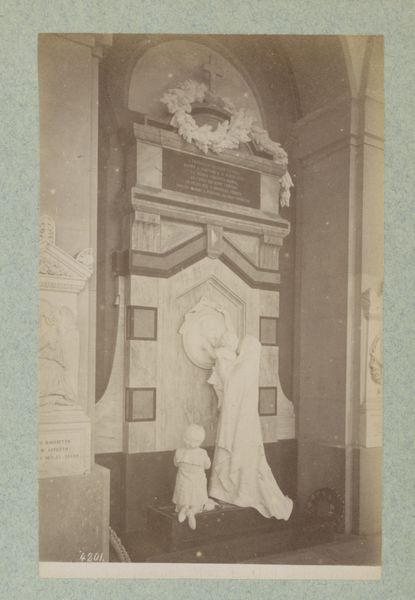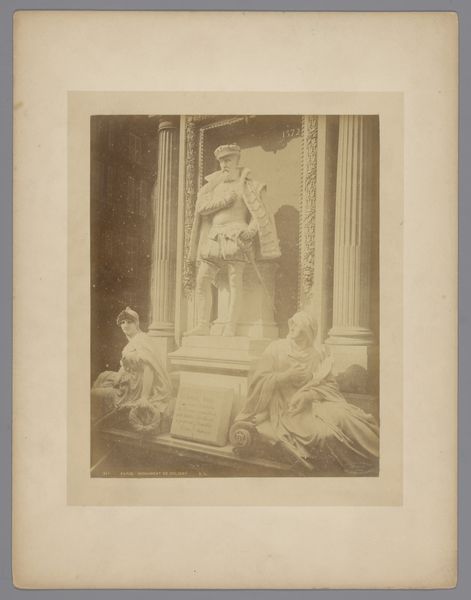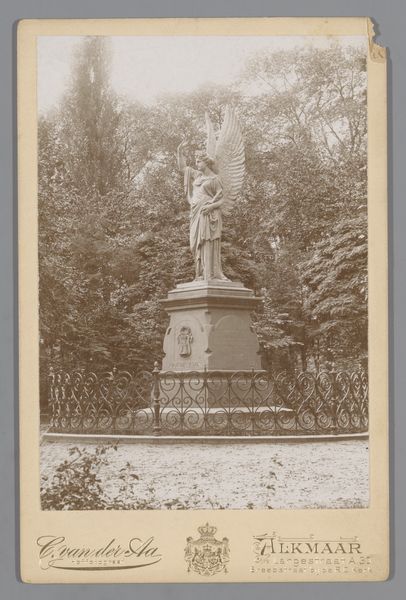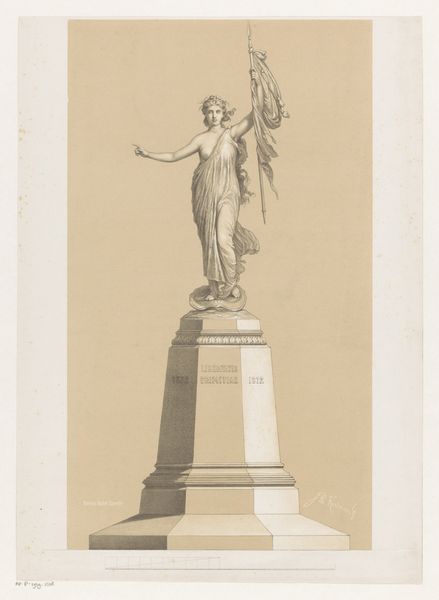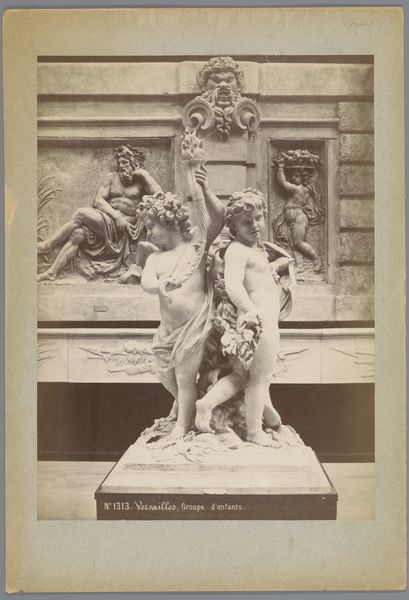
Dimensions: height 157 mm, width 104 mm
Copyright: Rijks Museum: Open Domain
Curator: Let’s consider this intriguing photographic reproduction of the Graaf Adolfmonument te Heiligerlee, dating from around 1880-1900 and held in the Rijksmuseum's collection. It depicts a sculptural group in bronze. Editor: It strikes me as a somewhat somber composition. The weary figure of the soldier contrasted with the upright woman figure seems to emphasize sacrifice and a call for support or perhaps resilience in the face of defeat. Curator: Exactly. The monument commemorates Adolf of Nassau, who died at Heiligerlee in 1568. Notice how the idealized, almost allegorical female figure stands behind him. The scene constructs narratives around Dutch identity and nationhood through a Neoclassical lens. The gaze of the statue begs the question, who truly benefits from sacrifice? Editor: And look at the texture of the bronze itself in the sculpture – how it is manipulated to create different surfaces and details. Even through the photographic reproduction, you get a sense of the work and the labour put into creating this symbolic work. This form is not neutral, bronze had to be harvested and molded; this whole process implies work that mirrors military conflicts and struggle. Curator: Absolutely, it speaks to power dynamics. How history memorializes certain figures and silences others. Adolf's death became a symbol for Dutch resistance against Spanish rule. How that narrative evolved becomes quite charged when seen against contemporary theories on conflict, identity, and colonial power. Editor: Thinking of the context of production: photography gaining traction and a popular method to display history. Bronze as material means of displaying "national pride," and Neoclassicism can be perceived as just the facade of empires' aesthetic that mask exploitation. It is important to dissect this image through this lens. Curator: Indeed, by analyzing both the photographic medium used to disseminate its image and its artistic influences and memorialised events we reveal power, class and gender complexities that were present during the Dutch golden age which we may even say, still resonates today. Editor: Right. Considering it is always important to investigate which type of materiality that we are choosing and consuming through a social and political analysis because this affects how it reflects through generations.
Comments
No comments
Be the first to comment and join the conversation on the ultimate creative platform.
